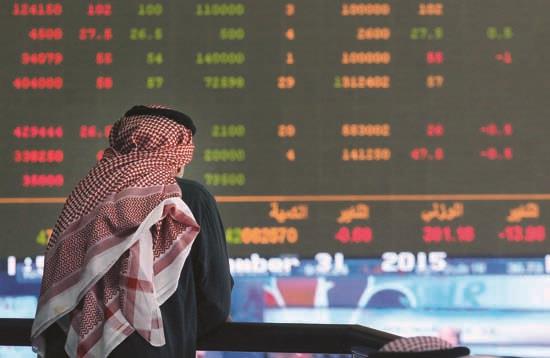
Doha declaration on 'oil output freeze' boosts GCC equity market
DOHA: The Doha declaration to freeze oil production at the January level boosted the GCC’s equity market sentiment in February. After January’s shaky start the market closed broadly higher in February.
In terms of valuation the GCC markets are still attractive vis-à-vis the peers. The one year forward PE ratio of GCC markets stands at 8-10x lower than that of the emerging markets Global Research’s monthly ‘GCC market performance’ report noted.
Qatar was the biggest second key gainer in the region in February after Dubai. The market capitalisation of GCC bourses was up 3.4 percent month-on-month to $801bn in February from $775bn.
The Saudi bourse’s market capitalisation was up 2.2 percent MoM making it the largest contributor to market capitalisation ($374bn or 46.7 percent) followed by the Qatari index ($121bn or 15.2 percent) and the Abu Dhabi and Dubai markets ($190bn or 23.7 percent). The Kuwaiti Omani and Bahraini exchanges contributed $116bn or 14.5 percent to the market capitalisation of the region.
Trading improved in February. Volume traded rose 33 percent MoM to 21bn shares while value traded grew 6.6 percent to $38bn.
GCC nations are expecting a deficit in their 2016 budget. Saudi Arabia and Qatar have already projected deficits of $87bn and $12bn respectively in their 2016 budgets. Furthermore Kuwait is estimating a deficit of $42.6bn in its 2016–17 budget. “We believe other GCC peers would follow suit. In the UAE Dubai announced a zero-deficit budget this year.
However the other emirates may record budget shortfalls. To reduce deficits GCC nations plan to raise taxes sell bonds and eliminate subsidies. Furthermore their focus would remain on strengthening non-oil revenue by developing small and midsized enterprises. GCC governments have already begun to develop their non-oil sectors to strengthen economies. Hence we believe in the long run GCC markets would be an attractive investment avenue” the report said.
QE rose 4.3 percent MoM in February led by an improvement in crude oil prices from the 12-year low reached in January. Crude prices gained in February amid news that Qatar Saudi Arabia Russia and Venezuela would lead an effort to freeze output at January’s level. Moreover Iraq expressed its willingness to freeze production at January’s level if an agreement could be reached between OPEC and non-OPEC countries.
Rating agency Standard & Poor’s affirmed Qatar’s long-and short-term foreign and local currency sovereign credit ratings at ‘AA’ and ‘A-1+’ respectively with stable outlook. The agency anticipates the country’s fiscal and external positions to shift to deficit from 2016. Nonetheless Qatar has a large net asset position which would enable the country to tackle the current low hydrocarbon price environment. In addition the ratings are supported by the fact that Qatar’s economy would remain resilient due to strong macroeconomic fundamentals. However the country’s trade surplus dropped 58 percent YoY in January 2016 to Q7.25bn as imports increased and exports declined significantly due to lower exports of petroleum gases and crude oil.
Trading on QE increased in February. The value of shares traded rose 19.1 percent to $1.4bn compared to the previous month while the volume of shares traded gained 18.2 percent to 138.4million shares.
The Peninsula

Legal Disclaimer:
MENAFN provides the
information “as is” without warranty of any kind. We do not accept
any responsibility or liability for the accuracy, content, images,
videos, licenses, completeness, legality, or reliability of the information
contained in this article. If you have any complaints or copyright
issues related to this article, kindly contact the provider above.


















Comments
No comment